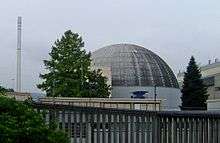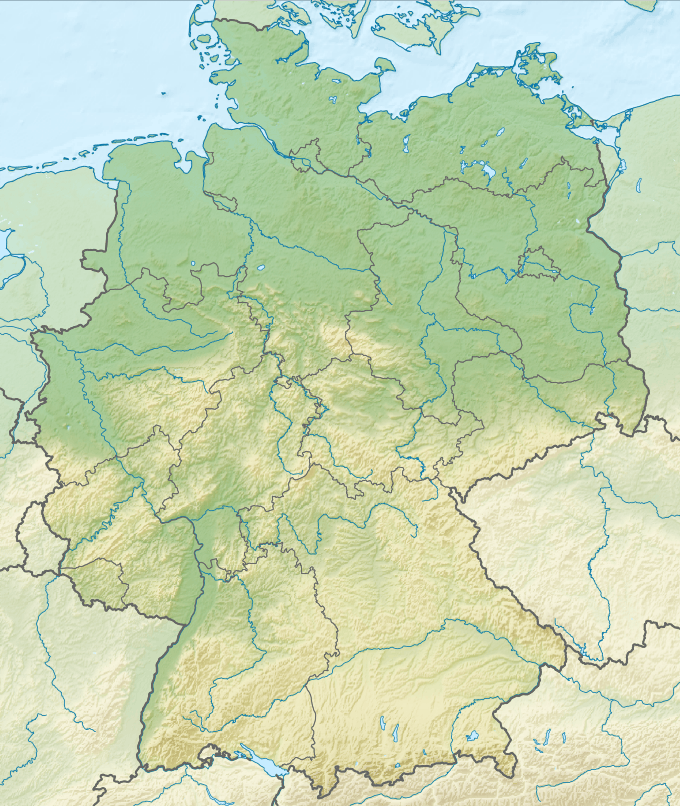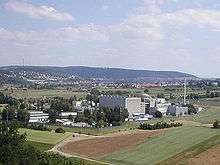Obrigheim Nuclear Power Plant
| Obrigheim Nuclear Power Plant | |
|---|---|
 The Obrigheim Nuclear Power Plant | |
 Location of Obrigheim Nuclear Power Plant in Germany | |
| Official name | Kernkraftwerk Obrigheim |
| Country | Germany |
| Location | Obrigheim, Neckar-Odenwald-Kreis |
| Coordinates | 49°21′52″N 9°04′35″E / 49.36444°N 9.07639°ECoordinates: 49°21′52″N 9°04′35″E / 49.36444°N 9.07639°E |
| Status | Mothballed |
| Construction began | 1965 |
| Commission date | March 31, 1969 |
| Decommission date | May 11, 2005 |
| Owner(s) | EnBW |
| Nuclear power station | |
| Reactor type | PWR |
| Reactor supplier | Siemens-Schuckert |
| Power generation | |
| Units decommissioned | 1 x 357 MW |
| Average generation | 2,593 GWh |
|
Website Site c/o EnBW | |
The Obrigheim Nuclear Power Plant (KWO) is a mothballed nuclear power plant in Obrigheim, Neckar-Odenwald-Kreis, at the river Neckar. It operated one pressurized water reactor unit.
History
Planning
On May 5, 1955 the Federal Republic of Germany, with the French occupation force, started to work seriously towards peaceful use of nuclear energy. Particularly the district of Bavaria and Baden-Württemberg were interested in such development. In 1957 the Arbeitsgemeinschaft Kernkraft Stuttgart (AKS) group had already been created in Baden-Württemberg. The president and minister of economics of Baden-Württemberg at the time, Hermann Veit took over the project of establishing a nuclear power plant, and looked towards the Calder Hall Gas cooled reactor in England for a design.
In spring 1959, AKS chose an exotic reactor design, the organically moderated and cooled reactor (OMR). When the much smaller AEC demonstration facility at Piqua, Ohio reported severe problems, they switched to a light water reactor in 1962.
Power line to the plant
The electric power generated by Obrigheim Nuclear Power Station was transported by a single powerline to Hüffenhardt substation. This powerline carries 4 circuits, 2 for 220 kV and 2 for 110 kV. Hereby the circuits for 110 kV are mounted on the lowest of the three crossbars of the pylons, whereby the circuits for 220 kV are mounted on the middle and the upper crossbar of the pylons.
An interesting feature of the powerline is, that between the pylons insulators are monted between the conductors in order to prevent short circuits by too close conductor clearance when strong wind occurs.
Meteorological towers
For radioactivity monitoring there were two meteorological towers, which were both built as guyed lattice steel mast. One of them was built in 1977/78 between Asbach and Kirstätter Hof at 49 20 30 N and 9 02 47 E. In 2001 this 169 metres tall guyed mast was demolished by explosives. On its site afterwards a free-standing mobile phone transmission tower consisting of prefabricated concrete was built. The other meteorological tower, which is 99 metres tall and situated close to the power plant, was erected in 1962 and is still in use.


.jpg)